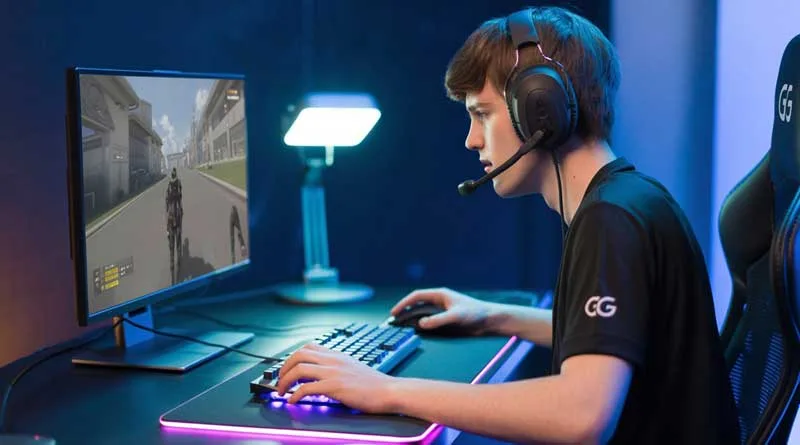Table of Contents
A truly lag-free gaming experience is the holy grail for every online player. Nothing is more frustrating than a sudden lag spike costing you a crucial match. While many gamers blame “bad internet,” the truth is that a smooth connection is a result of a fully optimized setup, from your router to the settings on your PC. This is your ultimate guide for 2025, breaking down the 5 key steps to crush latency and dominate your games.
This comprehensive guide will cover everything you need to know. We’ll explore the technical details and give you actionable advice. Whether you’re trying to figure out if you have the right internet plan or just want to fine-tune your settings, you’re in the right place.
Step 1: Understand the Metrics That Actually Matter
Before you can fix lag, you need to know what causes it. It’s not just about download speed.
- Ping (Latency): This is your #1 priority. Measured in milliseconds (ms), ping is the time it takes for data to travel from your device to the game server and back. Anything under 50ms is great; under 20ms is elite.
- Jitter: This measures the variation in your ping over time. High jitter causes inconsistent lag spikes, which are even more frustrating than consistently high ping.
- Packet Loss: This happens when data packets get lost during transit. Even 1% packet loss can cause noticeable stuttering and rubber-banding.
- Upload/Download Speed: While important, you don’t need gigabit speeds for gaming. A stable 50-100 Mbps download and 10+ Mbps upload is more than enough for a seamless gaming experience.
You can test these metrics easily using a reliable tool like Speedtest by Ookla.
Step 2: Optimize Your Home Network for Gaming
This is where you have the most control and can see the biggest improvements.
Go Wired: The Golden Rule
If you take only one piece of advice from this guide, let it be this: use a wired Ethernet connection. Wi-Fi is susceptible to interference from other devices, walls, and even your microwave. A direct Ethernet cable from your router to your console or PC provides the most stable, lowest-latency connection possible.
Your Router is Your Gatekeeper
A high-quality router can dramatically improve your connection. Look for a “gaming router” from a reputable brand like ASUS or Netgear. (This is an external link.) These often have a crucial feature called Quality of Service (QoS), which allows you to prioritize traffic to your gaming device, ensuring it always gets the bandwidth it needs.
Step 3: Choosing the Right Internet Service Provider (ISP)
Your ISP is the foundation of your connection. While you may be limited by what’s available in your area, here’s what to look for.
Fiber vs. Cable vs. DSL
- Fiber: The undisputed king for gaming due to its extremely low latency and symmetrical upload/download speeds.
- Cable: An excellent choice that offers very low latency, almost on par with fiber. Its main drawback is lower upload speeds.
- DSL: An older technology that generally has higher latency and should be your last resort.
For a detailed look at a specific provider, see our in-depth review: Is Spectrum Internet Good for Gaming?
Step 4: Fine-Tuning Your PC and Console Settings
You can further optimize your connection with a few software tweaks.
For PC Gamers: A Critical Checklist
- Close Background Apps: Make sure applications like cloud backups (Dropbox, OneDrive), software updates, and video streams are closed while you’re gaming.
- Update Network Drivers: Go to your motherboard or network card manufacturer’s website and install the latest drivers.
- Optimize Your Graphics Card Settings: Both NVIDIA and AMD have control panels with “low latency” modes that can help reduce input lag.
Step 5: Achieving a Truly Lag-Free Gaming Experience
This final step is about putting it all together. A truly lag-free gaming experience isn’t the result of one magic fix, but the combination of many small optimizations. By using a wired connection, a good router, the right ISP, and clean software settings, you build a rock-solid foundation for competitive play.
Remember to test your connection before and after making changes to see what has the biggest impact. By systematically addressing each potential bottleneck, you can take control of your connection and finally enjoy the smooth, responsive gameplay you deserve. For other specific tech problems, you can also check our guide on how to transfer files from your phone to PC.

